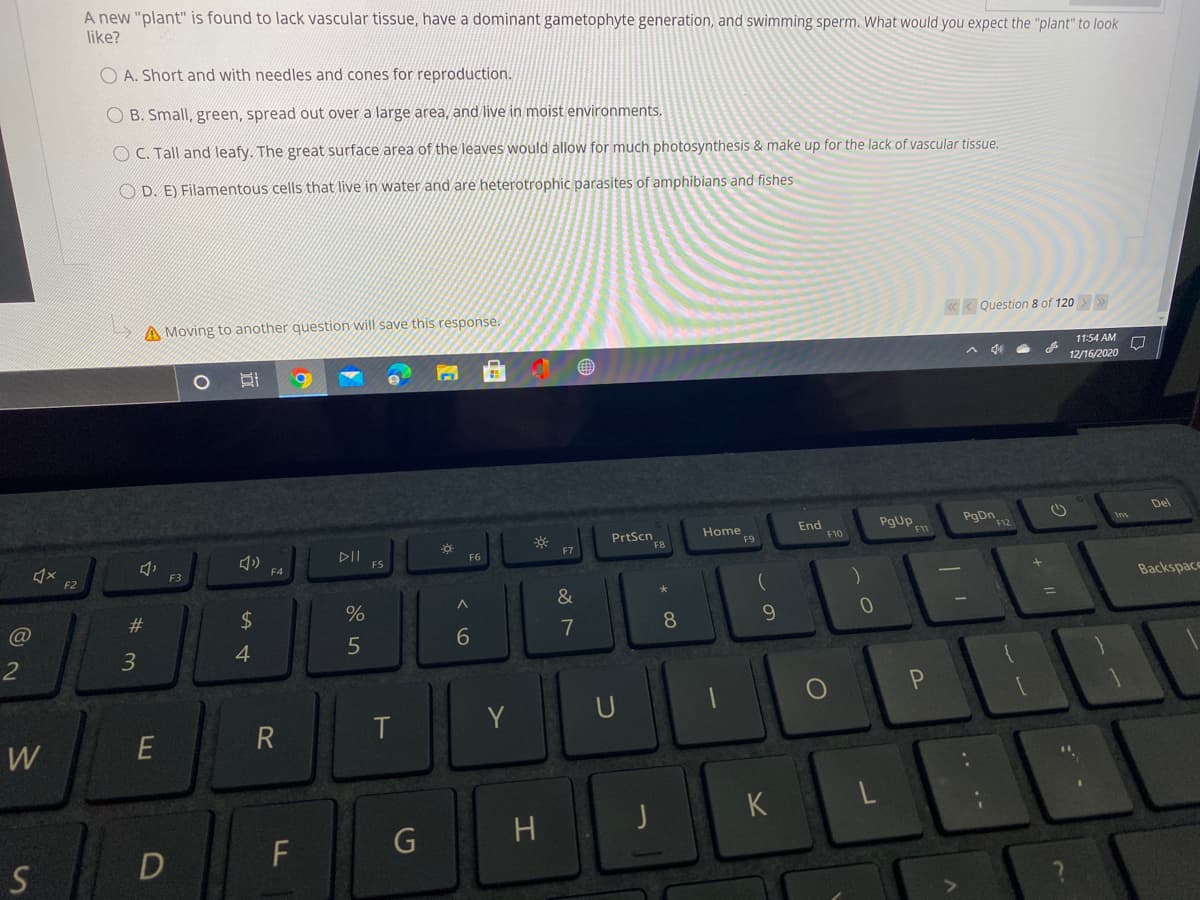A new "plant" is found to lack vascular tissue, have a dominant gametophyte generation, and swimming sperm. What would you expect the "plant" to look like? O A. Short and with needles and cones for reproduction. O B. Small, green, spread out over a large area, and live in moist environments. O C. Tall and leafy. The great surface area of the leaves would allow for much photosynthesis & make up for the lack of vascular tissue. O D. E) Filamentous cells that live in water and are heterotrophic parasites of amphibians and fishes
Life Cycle Of Bryophytes
A group of plant species that utilize spores, instead of flowers or seeds, for reproduction is known as a bryophyte. The non-vascular seedless plants which include mosses, liverworts, and hornworts are classified as bryophytes. There are over 20,000 species of mosses, with some species being microscopic and others reaching heights of over one meter.
Plant Biometry
Biometry is the science that deals with the statistical investigation of biological observations and phenomena. It is very important in the development of sound and effective agricultural research practices. It is a Greek-derived word wherein 'bio' means life and 'metrics' means 'to measure'. Thus, it is generally defined as the combination of statistics and science. Water Weldon introduced this term. This method is applied in several fields of science, including botany, health, social and physical sciences, and humanities.
Life Cycle Of Gymnosperms
Gymnosperms, which translates to "naked seeds," are a diverse group of seed plants. The angiosperms are a sister group to one group of gymnosperms (the Gnetales), making the gymnosperms a paraphyletic group, according to the "anthophyte" hypothesis. The term "paraphyletic group" refers to a group that does not include all descendants of a single common ancestor. The "netifer" theory, on the other hand, indicates that Gnetophytes are sister to conifers, making gymnosperms monophyletic and sister to angiosperms. Further, molecular and anatomical research may shed light on these connections.
Life Cycle Of Pteridophytes
They are the first land plants with vascular tissues (xylem and phloem). These vascular plants are classified as vascular cryptogams because they do not contain flowers or seeds. These plants are the most common and visible group of land plants, accounting for more than 90% of all vegetation on the planet.
Life Cycle Of Angiosperms
An angiosperm is a word obtained from the two Greek words angio, which refers to "covered," and sperms, which means "bean". Flowering plants are what the angiosperms are called. The flowers of a plant develop into fruits, which contain seeds.

Plants are the autotrophic organisms that are capable of synthesizing their own food with the help of sunlight and inorganic compounds. The food prepared by plants is then used by other heterotrophs to meet their energy demands. The mechanism that allows plants to prepare food is known as photosynthesis.
Explanation of all the options:
A) Short and with needles and cones for reproduction: Plants that do not have vascular tissue cannot grow much in height and thus are short. Cones and needles are present in gymnosperms. Gymnosperms are vascular plants. Hence, it is an incorrect option.
B) Small, green, spread out over a large area, and live in moist environments: Plants that do not have vascular tissue cannot grow much in height and thus are short. Cryptogams are plants that have motile sperms and need a moist environment for the sperm to swim. These plants being small in size can cover a large area. Hence, it is the correct option.
C) Tall and leafy. The great surface area of the leaves would allow for much photosynthesis and make up for the lack of vascular tissue: Plants that do not have vascular tissue cannot grow much in height and thus are short. Hence, it is an incorrect option.
D) Filamentous cells that live in water and are heterotrophic parasites of amphibians and fishes: Plants (mostly) are autotrophic organisms and are capable of synthesizing their own food. Hence, it is an incorrect option.
Step by step
Solved in 3 steps




